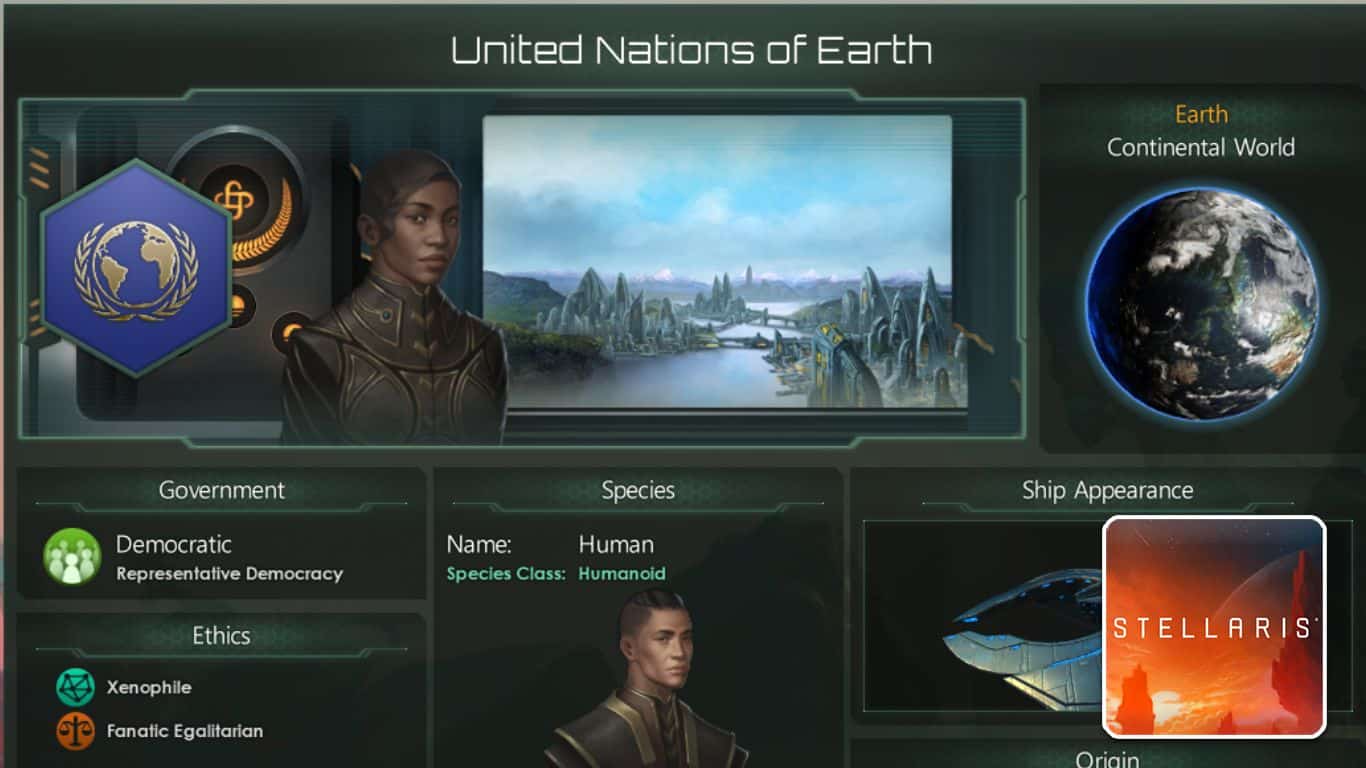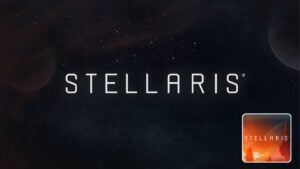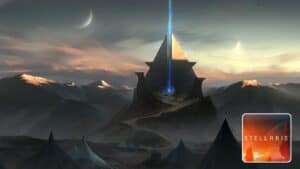Choosing a starting solar system in Stellaris is one of the first decisions you make in the game. This decision may seem minor, but it can have long-reaching consequences on your playstyle.
In most playthroughs, you will start in a random system with a home planet between sizes 18 and 21. We do have some tools in the game to give us the best possible start by tailoring our first solar system.
Recommended Read: How to Expand Borders in Stellaris
What makes a starting system the best? Well, that depends on your playstyle and what kind of empire you are playing. With that said, there is one system that is often considered leaps and bounds ahead as it has multiple benefits.
Table of Contents
What is the Best Starting Solar System in Stellaris
Before I can answer this, I should acknowledge that there are 3 different kinds of starting solar systems: random, semi-random, and pre-set.
Random is your standard system. The game will generate you a solar system based on your climate preference. We are not interested in this kind of system for this guide as we have little to no control over the outcome.
Next, we have semi-random. This has the potential to give you some very strong starting worlds and solar systems. The problem with these is that they often come with a burden as well as a boon. We can get a semi-random system by selecting specific origins when creating your empire.
Finally, we have pre-set solar systems. Now there are only two pre-set solar systems worth a damn. Both of these are related to the humanity empires; The United Nations of Earth and The Commonwealth of Man. You do not need to play a human empire to use these systems, and they come with little to no downside when you pick them.
Pre-set Solar Systems
These two systems give us the best control over how we start. This is why they are often considered the strongest way to start in Stellaris.
Sol
This is our solar system and is many players’ first empire. Your starting planet will always be Earth and will always be size 18. Now this is Sol’s only weakness. When rolling random starting planets, you will always get a planet from size 18-21. When you pick Sol, you will always start with the smallest possible starting world.
So why would you pick this tiny planet? Well, Sol comes with a long list of benefits that no other start comes close to. Mars will always be in your home system and will be a size 12-13 terraforming candidate.

Alpha Centauri will also spawn 1 hyperlane away. It will always contain a habitable planet and a terraforming candidate that is discovered through an anomaly. Other stars like Bernard’s star and Sirius will also spawn only one jump away.
Deneb
The second pre-set solar system is Deneb. It is a real star in our galaxy and is around 1500 lightyears from us. Deneb provides us with some nice handy benefits but this time with zero downsides. The Commonwealth of Man is the pre-built empire that lives in Deneb, but like Sol, any empire can start here.
Deneb will always spawn a homeworld with a size of 20. Whiles not the maximum rolled size of 21, this is pretty darn close. On top of this, Deneb comes with the chance to have a terraforming candidate in the starting system. While not guaranteed, you can keep restarting the same playthrough until you get it. If you are not above a little cheating, of course.
Semi-Random Systems
The semi-random systems are selected during empire creation. In the origins tab, we can choose the history of our empire and choose what its humble beginnings are. Some but not all of these origins give us access to powerful starting planets and other opportunities out in the galaxy.
Remnants Origin
This origin provides you with a size 22 Relic World. A big and useful planet all on its own, but that isn’t all. The starting planet will have 5 ruined archology blockers. When you clear one of these, you unlock a random technology for free.
If you have guaranteed habitable worlds turned on, these planets will have the Colonial Remains modifier. This modifier provides a 25 percent cost reduction when constructing buildings and districts.
Life-Seeded Origin
This origin has your species start on a Gaia World. In simple terms, a Gaia world is a paradise planet. It is almost like the world was built for its inhabitants. Gaia worlds are a massive size 30 planet and will have several rare planetary features too.
There is a downside to this, though. Your species will have the Gaia World preference. What this means is they will not like living anywhere that is not a Gaia world. As you can imagine, these paradise worlds are few and far between in the galaxy. If you are “lucky” enough to find one, it is likely protected by a fallen empire. Be careful not to invoke their ire, as these are some of the most powerful foes in the game.
On the bright side, if you are attempting a one-planet challenge playthrough, there is no better-starting origin than this one.
Ocean Paradise Origin
At first glance, this may seem a cheap imitation of the Life-Seeded origin. They both provide a size 30 planet and they have some strong planetary features.
Ocean Paradise is better if you are not doing the one-planet challenge. Your guaranteed habitable worlds will all be frozen, but these can be terraformed when you unlock that tech. Unlocking the tech to terraform Gaia worlds is rare and will take much longer to acquire.
When taking this origin, your starting species must take the aquatic trait. Giving great buffs to pops on ocean planets but debuffs to pops not on ocean worlds. The effects are boosted by using the Hydrocentric ascension perk. Further improving the efficacy of this origin.
Shattered Ring
This origin lets you start on a ruined Ring World Mega Structure. Without needing to research Mega-Engineering, you can pay 10,000 alloys to repair the other sections of the Ring World.
Starting on a Ring World allows you to build segments instead of districts. Segments let you tailor your resource production to your needs much better than districts.

Be warned, when selecting this origin, your species will receive the Ring World preference trait. This will mean you have 0 percent habitability on all other planets.
You can biologically modify your pops using, but this is a mid-game technology. The other option is to build more Ring Worlds, but this is a very late-game option. This will mean your species will only be able to utilize its Ring World for a good chunk of your playthrough.
There are other options when picking starting systems, but these make the game harder. If you are at the beginning of your Stellaris journey and picking random systems only ends in death for your glorious empire, you should give one of these starting systems a try.
Thank you for reading this Stellaris guide. If you have any questions or suggestions for this guide, please leave a comment below. Good luck with your next empire.




